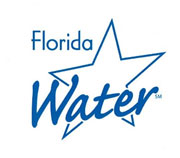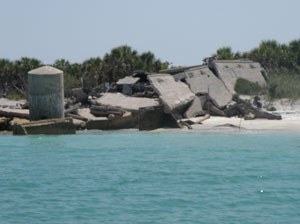[printfriendly]Payback on Water Star Homes Less than Three Years
 New research compiled by the Florida Water Star program shows that new homes with efficient indoor fixtures and irrigation systems with increased mulched areas pay for themselves in just 2.7 years – then provide annual savings of $852 after that.
New research compiled by the Florida Water Star program shows that new homes with efficient indoor fixtures and irrigation systems with increased mulched areas pay for themselves in just 2.7 years – then provide annual savings of $852 after that.
Water-Smart fixtures indoors use approximately 20% less water than typical fixtures and appliances, although purchase prices are similar. Outdoors, Florida Water Star homes must have no more than 60% high-volume irrigation – typically used to cover lawns – compared to a typical landscape with about 80% high-volume irrigation. Assuming that homeowners use the correct irrigation scheduling, estimated costs and savings in the city of Ocoee would be:
- The initial investment will cost $2318 more than a typical home
- Average water savings will be 175,504 gallons per year
- Average dollar savings will be $852 per year
- The average homeowner will see return on their investment in 2.7 years.
Savings might differ in other areas where water costs are higher or lower.
Only new homes can earn the Water Star designation, although residents may retrofit homes using the same online checklist that builders would use. Statewide about 900 homes are certified with 365 located within the Southwest Florida Water Management District.
Learn more at www.floridawaterstar.com.
[su_divider top=”no”]USF Students Vote to Renew Green Energy Fee
University of South Florida students renewed the Student Green Energy Fee with a 69% approval rating during the recent student government election. The $1 per-credit-hour student fee generates about $1 million per year and supports sustainability initiatives on campus that:
- conserve energy and reduce energy costs
- lower greenhouse gas emissions
- promote renewable energy technologies
- create student jobs, leadership experiences and green job skills.
The SGEF renewal occurred on the heels of USF’s second gold star rating from the Association for the Advancement of Sustainability in Higher Education (AASHE) for its commitment to campus sustainability. This makes USF the only university in Florida whose sustainable campus and cutting-edge programs merited gold in AASHE’s Sustainability Tracking, Assessment and Rating System.
[su_divider] Sand Slated for Egmont Key
Sand Slated for Egmont Key
It’s not a done deal yet, but the U.S. Army Corps of Engineers has slated up to 1.3 million cubic yards of dredged material to help stop erosion on the western shore of Egmont Key.
The material is coming from ongoing maintenance dredging at the entrance to the main shipping channel, which is the same source as the 2006 material deposited on Egmont, said Aubrey Hershorin, USACE biologist. “It’s not beach-quality sand so we still need approval from federal agencies.”
The primary concern is that excess silt in the sand may deter sea turtles from nesting on the beach. USACE preliminary data indicate that special placement techniques will ensure that excess silt is washed out to sea.
The first material will be used to cover the geotubes placed in 2006 at the northern tip of the island, with remaining sand placed in a V-shaped spit at the rapidly eroding center of the island. That will allow wave action to push it north and south and help to remove excess silt.
Located at the entrance to Tampa Bay, the lighthouse at Egmont Key was the first on Florida’s west coast. Visit the Fall 2002 issue of Bay Soundings for more information.
[su_divider] If You Can’t Beat ‘Em, Eat ‘Em
If You Can’t Beat ‘Em, Eat ‘Em
A concerted push to promote blue catfish to restaurants in the Chesapeake Bay region more than doubled the amount of the fish sold the previous year, says Steve Vilnit, director of fisheries marketing for the Maryland Department of Natural Resources’ Fisheries Service.
Intentionally introduced in the 1970s as a new recreational fishery, the blue catfish now makes up an estimated 75% of total fish biomass in local rivers. Fishermen can net up to 20,000 pounds of blue catfish in one swoop in some tributaries and their abundance means a low price-per-pound.
Locally, divers are concerned about the invasive lionfish which has been spotted in a number of reefs off the Tampa Bay region – and is found in a number of restaurants in South Florida. Growing populations have been documented off the coast of Pinellas County.
Reef Monitoring has scheduled a lionfish roundup for Saturday, May 10. They’ll also be collecting data including otolith removal to support on-going research.
Learn more at www.reefmonitoring.org.
[su_divider]Planning for Nitrogen Management
 Under new regulations that call for net environmental benefit for new development, planners across the region are learning how to limit nitrogen even as natural surfaces are covered with rooftops and parking lots.
Under new regulations that call for net environmental benefit for new development, planners across the region are learning how to limit nitrogen even as natural surfaces are covered with rooftops and parking lots.
“At this point, no reduction in nitrogen inputs is necessary but we must continue to hold the line,” notes Maya Burke, senior planner for the Tampa Bay Regional Planning Council which developed the report with funding from the Tampa Bay Estuary Program.
Some local development codes created for safety and aesthetics actually increase paved surfaces that make stormwater runoff more likely, she notes. For instance, wide roads with curbs and gutters make it easier for emergency vehicles to navigate and safer for children on bicycles, but more natural swales capture nutrients more efficiently.
A series of meetings with planners highlighted the issues and defined challenges ahead including:
- Education of elected officials on nitrogen regulations and the costs of various techniques for controlling nitrogen once it is released into the environment (see Bay Soundings, Spring 2011)
- Education of planning officials on policy changes needed to improve water quality
- Enhanced land development codes to address nitrogen loading.
Learn more at http://www.tbrpc.org/resource_center/integrating_nitrogen_management.shtml
[su_divider]License plate fees drop
With the cost of a license plate dropping by an average $25 per vehicle, managers are hopeful that sales for the specialty “Tarpon Tag” will surge to pre-2009 levels.
“The rollback will pay for the cost of buying our tarpon tag,” notes Ron Hosler, program administrator for the Tampa Bay Estuary Program. License plate sales have financed more than 200 community grants awarded by the TBEP, which receives 80% of specialty plate money (see Bay Soundings, Winter 2011). The Tampa Bay Regional Planning Council directs most of its 20% share toward the publication of Bay Soundings.
More than $1.5 million in Bay Mini-Grants have been awarded to community groups across Tampa Bay since the program was established in 1998. Bay Soundings, now in its 12th year of publication, reaches an average 40,000 readers per issue with more than 10,000 online visitors monthly.
[su_divider]